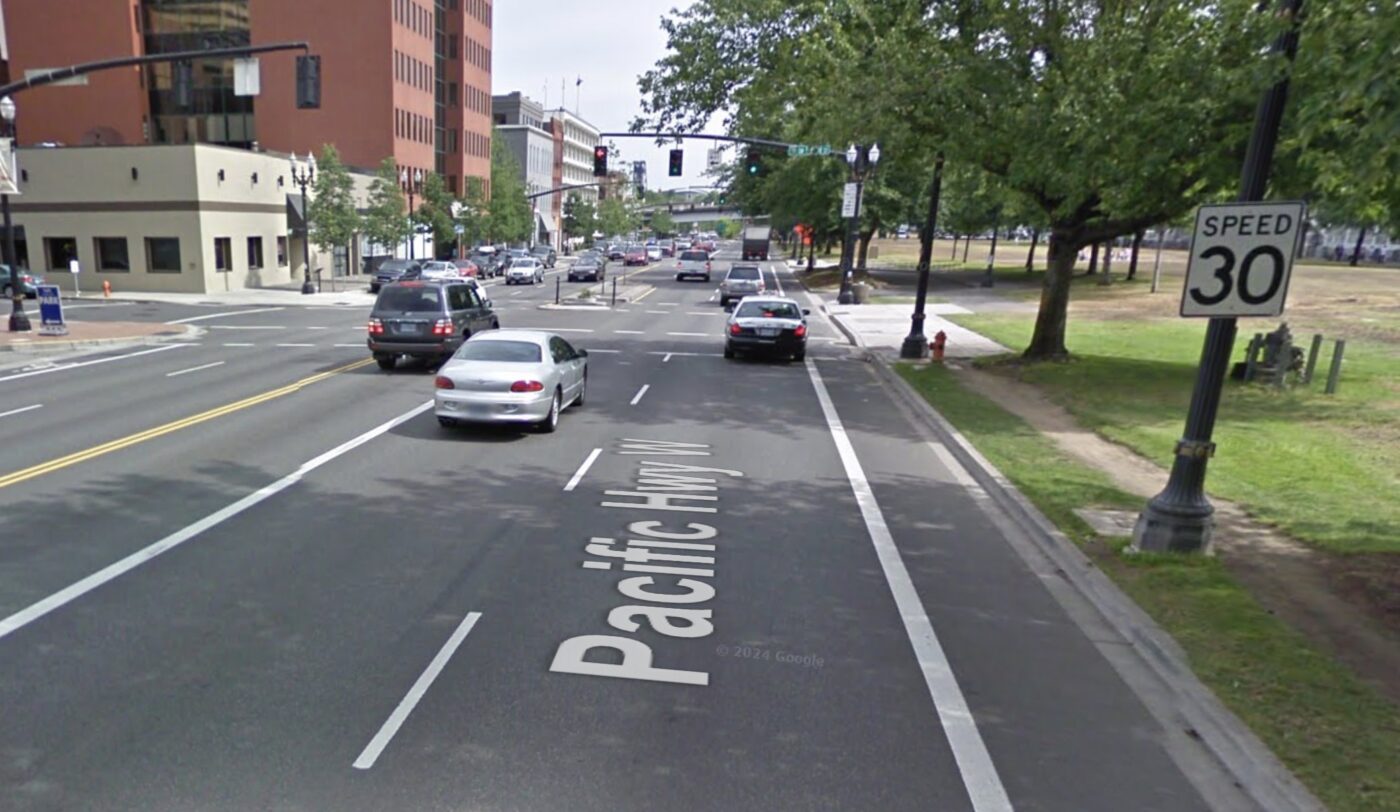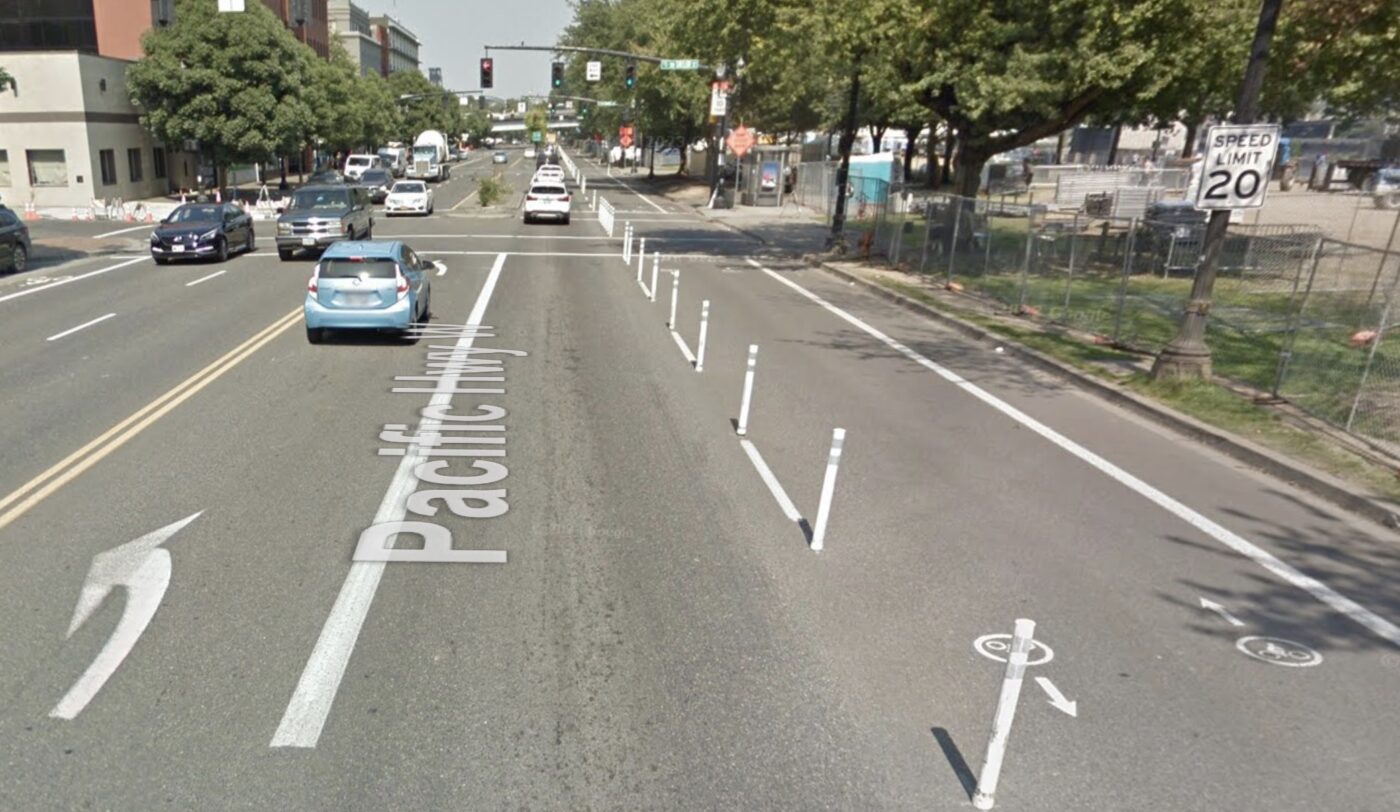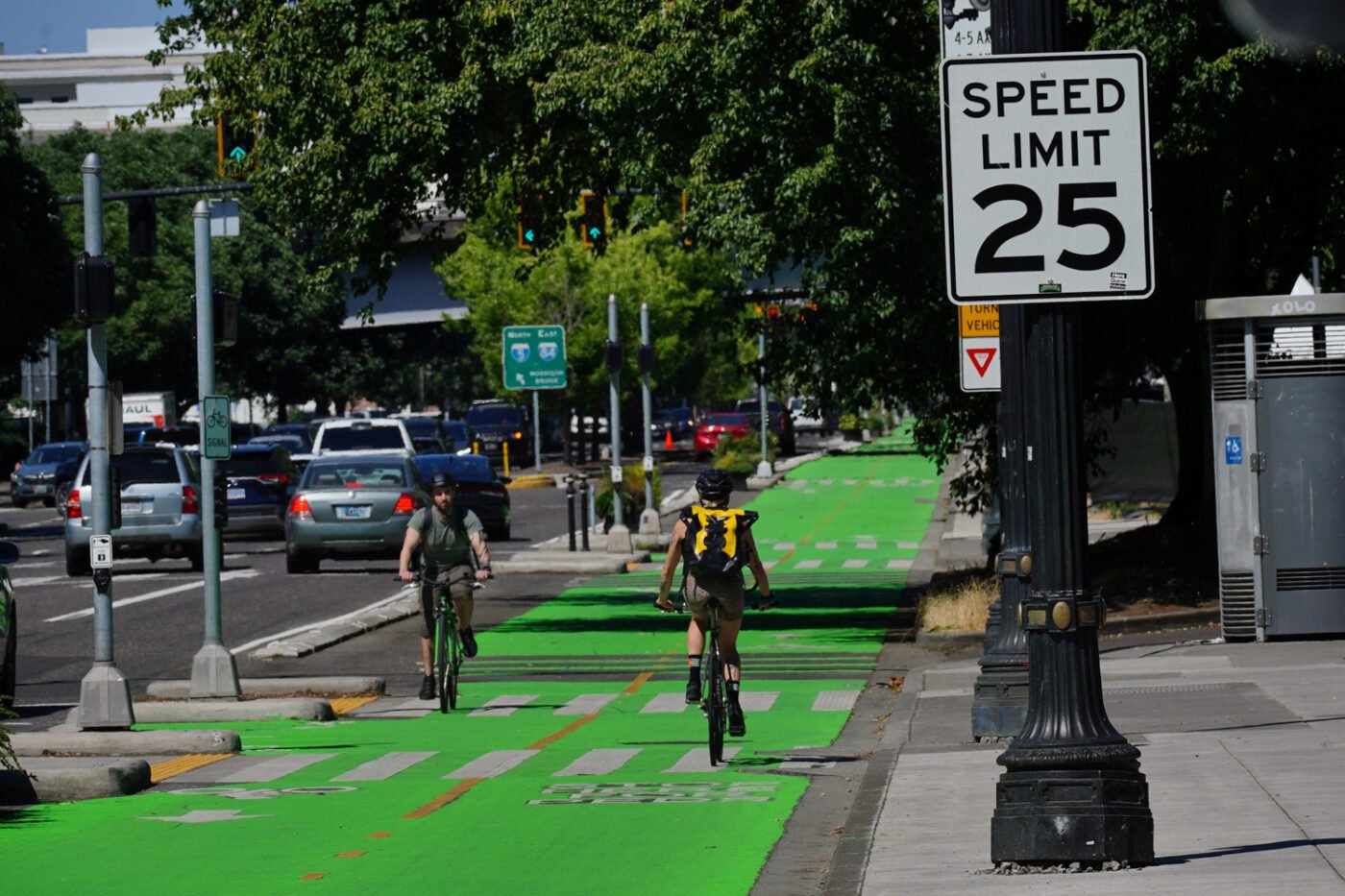We watch Naito Parkway very closely here on BikePortland because it’s home to one of the most high-profile bikeways in the entire city: Better Naito. So when I recently heard grumblings in activist circles about its speed limit and the rate at which people break it, I decided to take a closer look.
Turns out the posted speed limit on this important, 1.2 mile stretch of Naito between SW Harrison (near Tom McCall Waterfront Park) and NW Everett (where the protected bike lane ends prior to the Steel Bridge) has gone through quite a few changes in the past eight years. And if all goes according to plans hatched just this week by the Portland Bureau of Transportation, we’ll see yet another change before the end of the year.
Come with me on a bit of a wonky ride into the history of Naito Parkway speeds…


Think back to 2016 when Naito (also known as Pacific Highway West/99W) had narrow, paint-only bike lanes and five general travel lanes (image on left). It was really inhospitable to cycling! In that era it had a posted speed limit of 30 mph. When the adjacent Waterfront Park had large festivals, crowds would spill into the lanes and create a very unsafe situation. It was that context that the idea for more cycling and walking space was born and named “Better Naito.”
In 2020, after three years as a pilot project, PBOT was finally ready to make the protected bike lanes permanent and launched the Better Naito Forever project. During this period, PBOT was able to reduce the speed limit to 20 mph since Naito was a construction zone (image on right).
In 2021 PBOT began the process to reduce the posted speed limit from 30 to 25 mph by making a formal request with the Oregon Department of Transportation (who oversees all speed limits). ODOT approved that change in 2023 and the signs changed from 20 to 25 mph earlier this year.
That five mph increase raised eyebrows. Why would we allow people to go faster on a multi-modal street in a crowded part of downtown Portland? That’s the question I asked PBOT this week as I began to look closer into this story.
PBOT spokesperson Dylan Rivera explained the history and said, “The bureau has been working on submitting a new speed zone reduction to 20 mph through our authority to set speeds in business districts.”
The “authority to set speeds in business districts” Rivera refers to is something PBOT has only had since a change to Oregon law went into effect in 2022. This change (outlined in Oregon Administrative Rule 734-020-0013) gives cities more power to investigate and determine speeds on roads in their jurisdiction (instead of ODOT having total control). In Oregon, the statutory speed limit for business districts is 20 mph.
Then Rivera added, “As of this morning (July 24th), we’ve submitted a request to rescind the 25 mph speed from Harrison to Everett in favor of a 20 mph speed as a business district. Assuming ODOT approves that request (which they typically do within days), we could change the speed back to 20 mph in the next 2-3 months.”
While Rivera seems confident ODOT will grant the 20 mph request, the ultimate decision is still in state engineers’ hands. (Who exactly has authority over the various aspects of speed limit setting is still a bit murky to me. The ODOT flow chart that explains it helps a little).
The current rate of rampant illegal speeding on Naito might figure into that decision. When ODOT did a speed study of Naito in May 2023 (and approved PBOT’s request to go from 30 mph to 25 mph), they found that 94% of all drivers exceeded the 20 mph limit. The 85th percentile speed — the speed at or below which 85 percent of all vehicles are observed to travel under free-flowing conditions — was 32 mph. (A PBOT speed study in December 2022 found similar numbers.)
One of the reasons ODOT agreed to lower the speed limit to 25 mph was because, “The crash rate for the segment exceeds 150% of the average crash rate,” for similar types of roadways. The question remains whether ODOT thinks lowering it even further to 20 mph will encourage folks to slow down and crash into each other less frequently, or whether it will be too low to process average daily traffic volumes.
Given how fast the majority of people drive on this stretch of Naito, making Better Naito Forever 20 mph forever could be considered too much of a stretch for ODOT to make.
ODOT says they are currently reviewing PBOT’s request and they will have a decision next week. Stay tuned. The speed limit signs on Naito might be changing once again!





